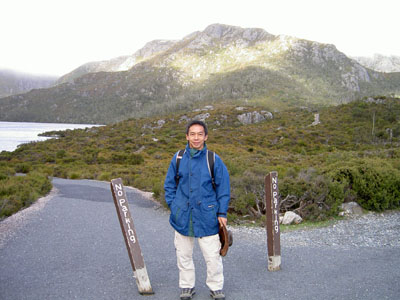
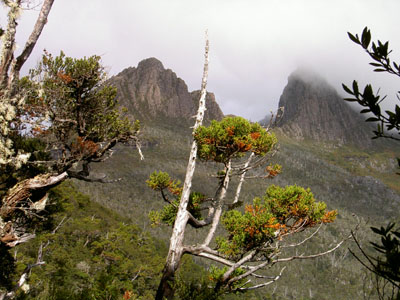
The Tasmania Nature Wise Holiday was organised by the Conservation Volunteers Australia. I was fortunate the group was very small, 2 girls, myself and the tour leader (Lance). Lance was a very good leader and very knowledgeable as well. We went on many nature hikes. Lance showed us how to appreciate nature by “living” our journey rather than rushing to the destination.
Day 1 (10th April 2005)
We travelled from Hobart to the Cradle Mountain. On the way we visited a number of small country towns and did some sight seeing. By the time we arrived at the Cradle Mountain it was late afternoon. There were visitors from various countries e.g. Germany, England, Japan, USA etc. After dinner we spent the evening chatting to the locals and the other visitors about their adventures. We went to bed early because we had a big day in front of us.
Day 2 (11th April 2005)
We got up early to prepare lunch and our backpacks for the hikes. Our plan was to hike around the glacier lake, Dove Lake in the morning and hike to one of the lookouts in the afternoon. We started at about 8.30am and the weather was nice but quite cold, about 8 degrees C.


When we arrived at the start of the track we gazed up to the towering spires of the Cradle Mountain for the first time. It was magnificent! Along the way we lingered at small sandy beaches where trees 1000 years old or more stand at the water's edge. On the walk Lance explained the geology of the area and how it was formed over millions of years by the moving glaciers. The flora was most interesting because there were trees from the dinosaur era and rainforests millions of year old. It was like walking back in time. Tasmanian rainforest is cool-temperate and closely related to the cool-temperate rainforests of New Zealand and South America. All these 3 areas have links with the old super-continent of Gondwana. In all these three lands the Nothofagus group of plants dominates these forests. Some of the rainforest trees we saw were: Leatherwood (Eucryphia licida), Myrtle (Nothofagus cunninghamii), Spicy Sassafras (Atherosperma moschatum), King Billy Pine (Athrotaxis selaginoides) and Celery-top Pine (Phyllocladus aspleniifolius). Besides the rainforest plant there are many other interesting flora as well. For example:
· Fagus (Nothofagus gunnii) - Australia’s only deciduous plant.
· Tasmanian waratah (Telopea truncata) with its bright red flowers.
· Silver banksia (Banksia marginata) – The only banksia in the Cradle Mountain area
· Gunn’s geebung (Persoonia gunnii) with attractive purple fleshy fruits.
· Pink mountain berry (Cyathodes parviflolia)
· Button grass (Gymnoschoenus spaerocephalus)
The hike took almost 4 hours because we took our time and tried to understand, appreciate and experience what we saw.
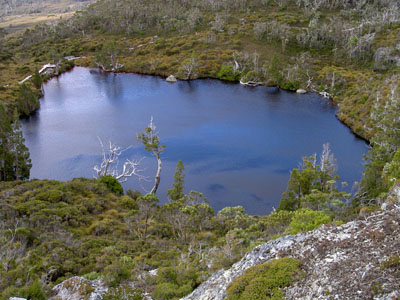
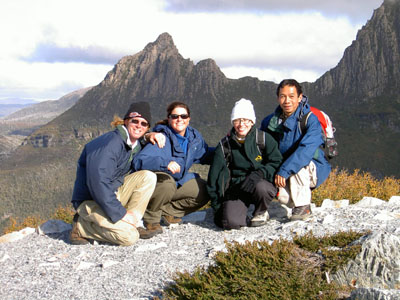
At the end of the Dove Lake track we had our lunch on the pebbly shore of Dove Lake. After lunch we began our hike to Marion lookout which is about 1300 meters above sea level. This was quite challenging hike because there were quite a few fairly steep climbs. But the views on top and on the way made it all worthwhile. We passed a small glacier lake called Lake Lila. With all the ancient trees growing around it, Lake Lila looked like a bonsai garden - very beautiful. Near the top we saw the beautiful autumn colour of the fagus or deciduous peach covering the mountainside like yellow carpet. On top of Marion lookout we could see the whole of Dove Lake and also a panoramic view of the surrounding mountains and peaks. On the way down it was quite taxing on our knees and ankles especially on the steeper slopes. The saying: “Its easy to go up but difficult to come down” is quite true. Anyway we got back safely a bit after 5pm. It has been a long day. We were dying to get back for a hot shower and a lay down. After dinner we went out in our van spot-lighting i.e. looking for animals using a spot light. We saw lots of possums, kangaroos, wallabies and pademelons grazing on the grass plain.
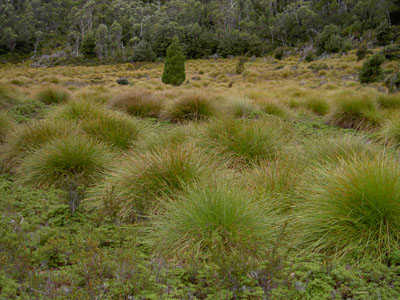
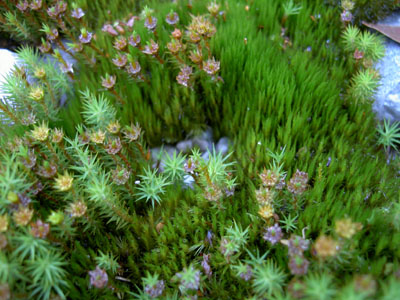
Day 3 (12th April 2005)
After breakfast we were ready to say goodbye to Cradle Mountain. The first part of our journey took us to Sheffield, the famous town of murals. As the name suggests we could not find a blank wall in town – murals and more murals. After Sheffield we travelled straight to our destination, the Australian Bush Heritage Fund’s Liffey River Reserve. The Reserve is a beautiful temperate rainforest located on the edge of the Tasmanian Central Plateau World Heritage Area. We stayed in the Longford Baptist Youth Camp which is quite close to the reserve. Since there were only four of us we got to occupy a single hut each. Talk about indulgence! Even though the accommodation was not quite up to the five star standard, the surrounding was definitely five star plus! After lunch we headed for Liffey River Reserve.
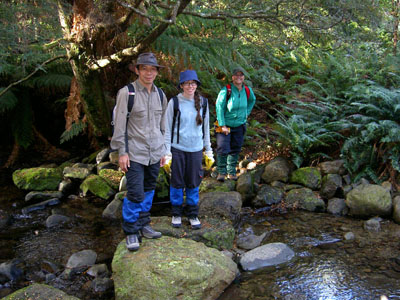
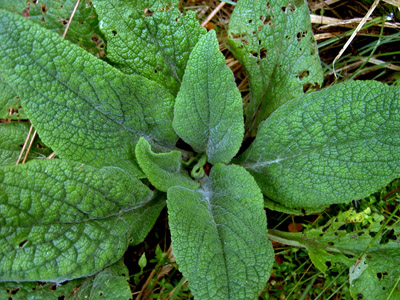
Our aim was to participate in the integrated weed management program to control the weed called Foxglove (Digitalis purpurea), a garden escape which can be found growing naturally in many parts of Tasmania, particularly in damp and shady places. Foxglove is able to rapidly spread and totally exclude native flora and fauna. It is also extremely poisonous and all plant parts must be handled with extreme care.
The Liffey River Reserve was purchased by the Australian Bush Heritage Fund in 1990. This 105 ha of fern gully and rainforest lies beneath the Great Western Tiers on the edge of the Tasmanian Wilderness World Heritage Area. Walking along the Bush Heritage Interpretive Trail was like walking in an alien world. Pages Creek, tumbling off the western slopes of the Bluff, passes through the 105 hectare Bush Heritage block which adjoins the Liffey Falls State Reserve. On the higher slopes, the dominant trees are the gum topped stringy bark (Eucalyptus delegatensis), the brown topped stringy bark (Eucalyptus obliqua) and manna gum (Eucalyptus viminalis), which form a type of wet sclerophyll forest.
Temperate rainforest species growing on the lower slopes include sassafras (Atherosperma moschatum), myrtle (Nothofagus cunninghamii), blackwood (Acacia melanoxylon), and giant tree ferns (Dicksonia antarctica). Some large, mature specimens of the rainforest trees can be found by the Liffey River and along the course of Pages Creek. Fungi, mosses and lichen thrive in the damp and shady environment.
The wet Eucalyptus viminalis forest is a haven for many species of wildlife, including pygmy possums, bettongs, potoroos, bandicoots and Tasmanian devils. Platypuses swim in Pages Creek and the Liffey River. At least 60 bird species are present, including the rare white goshawk, the threatened Tasmanian wedge-tailed eagle, yellow-tailed black cockatoos, boobook owls and pink robins.
Day 4 (13th April 2005)
Today Lance our leader is taking us for a hike into the Liffey Falls State Reserve. We were very excited about the prospect of seeing some platypuses in the wild.
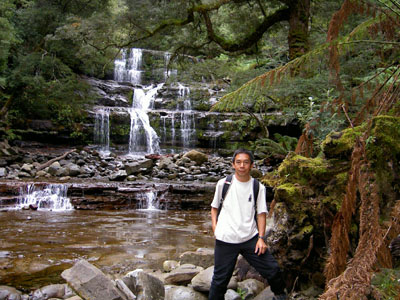
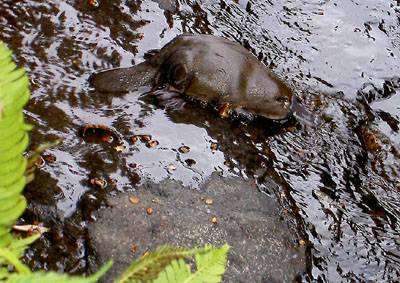
The walk took us along the Liffey River which meanders through some beautiful rainforest. Occasionally trouts and native freshwater crayfish could be seen in the crystal clear water of the creek but there was no platypus to be seen anywhere. Half an hour into the walk we reached the beautiful Liffey Falls. While we were wondering around enjoying the beauty of the falls we heard someone yelled, “Platypus”! We hurried across to a small family group on an observation platform and sure enough there was a platypus searching for food in broad daylight, a very unusual behaviour indeed. Lance pointed out that the platypus is a male and still quite young. The reason he was feeding in broad daylight could be: he was forced out of the burrow for the first time to fend for himself and he was hungry! Anyway whatever the reason might be we were over-joy in seeing a platypus in the natural environment.
We packed up after lunch and started our journey to Coles Bay on the East Coast of Tassie. By the time we arrived in Coles Bay the sun was retiring from a long day. The setting sun set the Freycinet Mountain Range “ablaze” with bright orange slowly changing to purple as the sun disappeared into the sea.
Day 5 (14th April 2005)
The sound of rain drops serenaded the arrival of day 5. Our scheduled activity today was to carry out a survey in the Friendly Beaches Reserve to determine the extend Phytophthora was killing the flora in the reserve. Phytophthora is a water mould that attacks the roots of susceptible plants. It causes the roots to rot, making them unable to absorb water and nutrients. Unfortunately due to the very wet condition this activity was cancelled. Instead Lance took us to visit his local friend Liz, a local National Park Officer. Liz lives on a beautiful little farm.
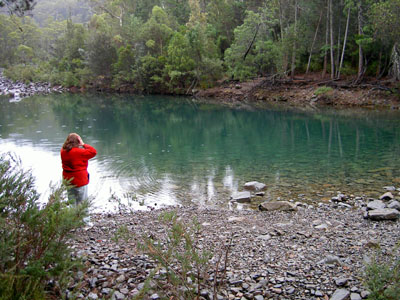
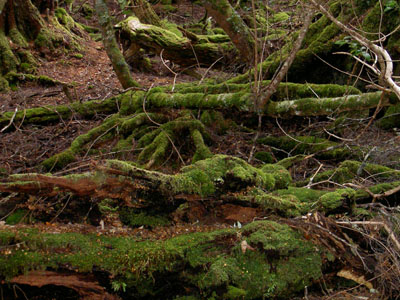
After the rain had subsided Liz took us for a walk in one of the local national parks before returning to the farm for afternoon tea. Then we were treated to a delicious seafood BBQ. Liz’s husband Barry is a local fisherman.
Day 6 (15th April 2005)
We woke up to a beautiful sunny day. After breakfast we packed up all our gear and headed for Freycinet National Park. We arrived at the visitor centre before the usual tourist invasion. We were on our track just after 8.30am. Our first stop was a lookout to take in the spectacular views over the world-renowned Wineglass Bay.
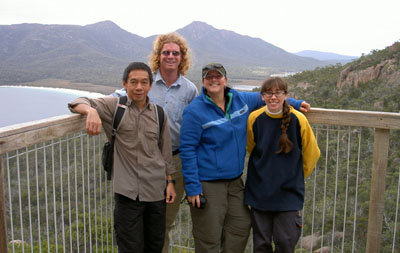
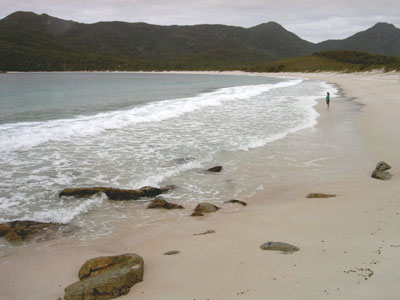
The Wineglass Beach looked so beautiful and inviting we decided to make the long track down to experience it. Even though the track was quite steep in parts this difficulty was insignificant when compared to the magnificent views and beautiful environment. Wineglass Beach is pure white sand, crystal clear water and thundering waves. But behind all these there was peace and tranquillity.


After lunch we reluctantly left Freycinet National Park and headed back to Hobart city. I stayed one night in Hobart before catching an early morning flight back to Sydney. It was a very enjoyable, memorable and informative trip for me. To top it all up I met one of my former Scouts, Ally on the flight back to Sydney. Ally was working as an airhostess. We were so happy to meet each other.
©